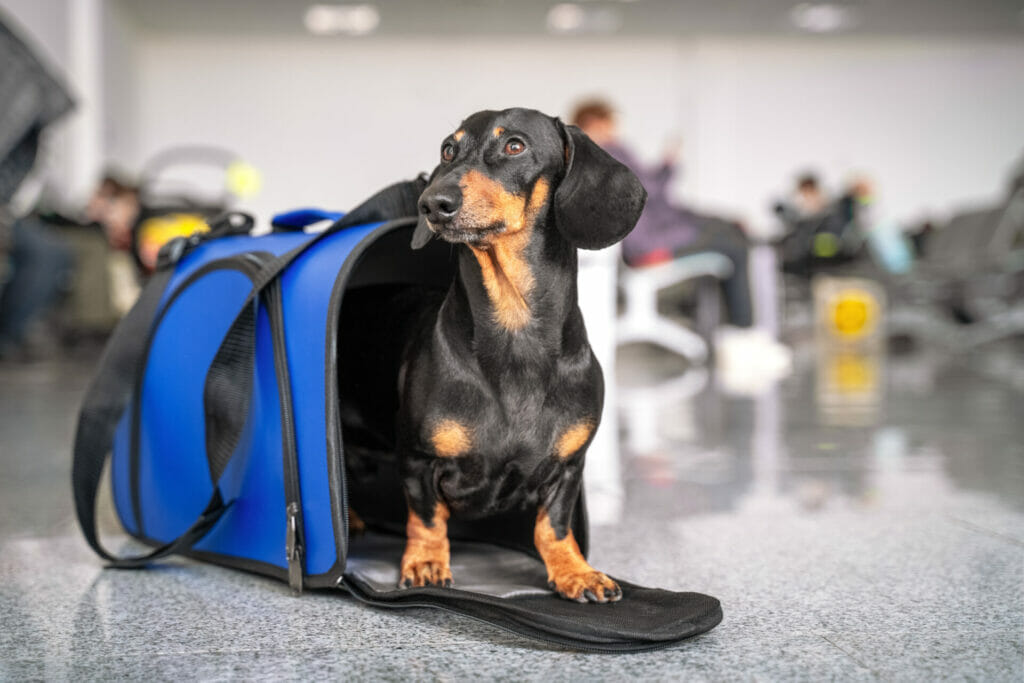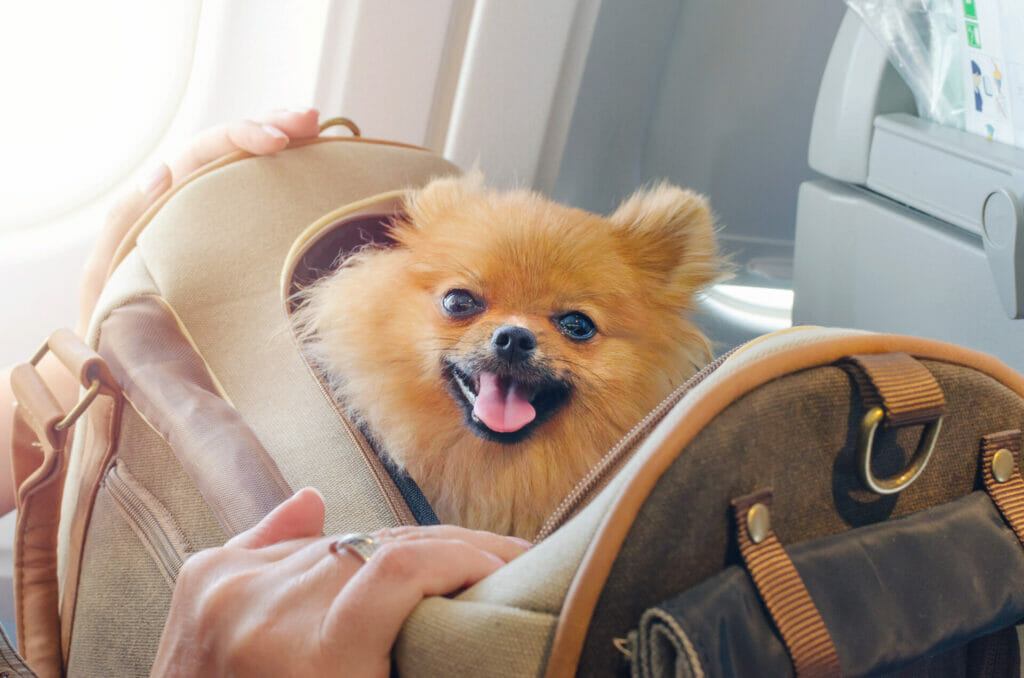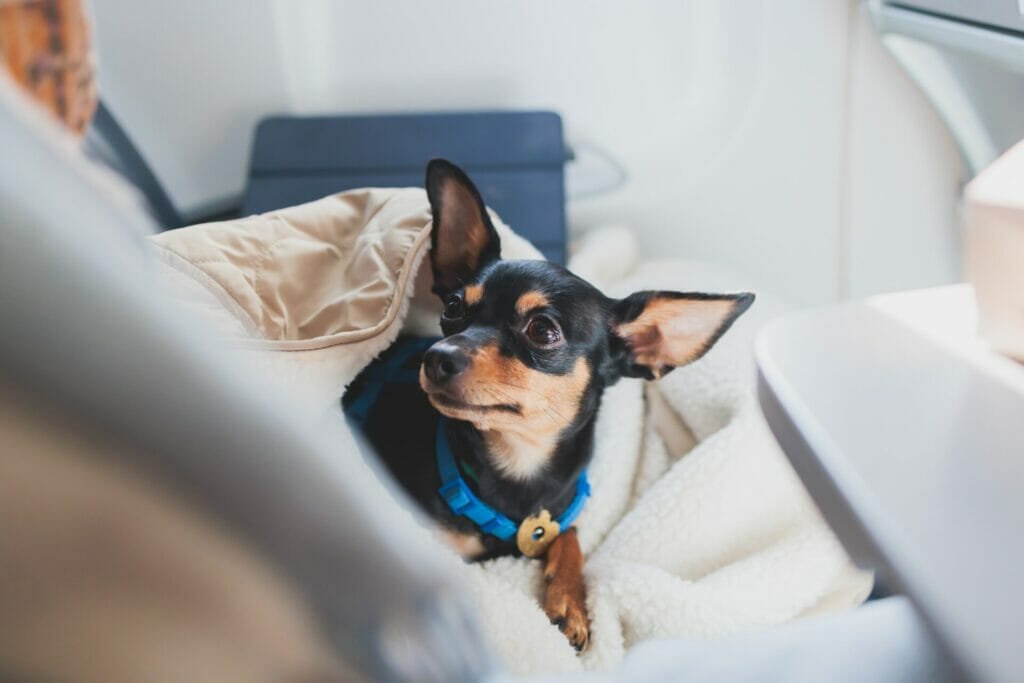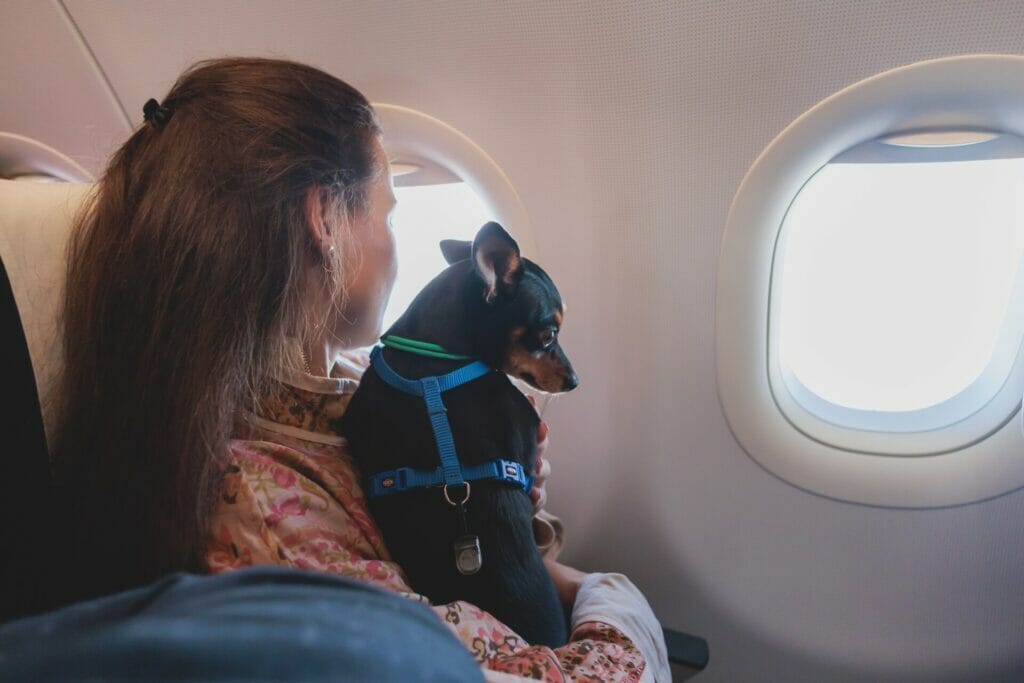Did you know that 37% of dog owners choose to stay home rather than go traveling overseas with their pets? Let’s face it, for most of us, our pets are like children. And if you prefer them to be with you rather than a petsitter, we can’t blame you!
While it can be challenging to travel with your dog, taking them along for a relaxing vacation on a Caribbean beach, or traveling overseas for a work trip, can be extremely rewarding for both of you! Knowing some tips for overseas travel with your dog can help you navigate the entire experience better, resulting in a stress-free and fun trip with your furry friend.
Research the country you are visiting
Before you book a flight or even start collecting all of the items you’ll need, it’s essential to research the country you plan on traveling overseas to. Most countries have restrictions on the animals they allow into their borders. This includes restrictions on specific dog breeds. The most common restricted breeds include Pitbulls, Rottweilers, Cane Corsos, Mastiffs, and Doberman Pinschers, among others.
Most countries also require certain vaccinations and certificates stating your dog is healthy. You can learn about each country’s specific requirements on the International Air Transport Association’s (IATA) website.
Choosing an airline
Once you have confirmed that your dog can legally be transported into the country you are traveling to, you can start researching different airlines. First, you need to determine if your dog can travel in the cabin with you or if they have to fly in the cargo hold. Most airlines allow dogs in the cabin if their carrier fits under the seat in front of you. Typically, dogs under 20 pounds will fit. You can get the actual dimensions on the airline’s website.
If your dog does not fit under the seat, they must fly with cargo. It’s important to note that not all passenger airlines transport live animals in cargo. If you can’t find a passenger airline to transport your large dog, you’ll have to work with a cargo airline that exclusively transports cargo. When researching cargo airlines, make sure that they have experience transporting dogs.

If your dog has to fly with a different airline than you when traveling overseas, make sure your flights align. Unless you have someone to drop your dog off at the airport or pick them up at your destination, your flights must align. Your flight will depart after your dog’s (so you can drop them off) and arrive before or at the same time as your dog’s (so you don’t leave them waiting). While this may seem impossible, given you are both headed to the same destination, cargo airlines typically require your dog to be dropped off several hours before departure. Remember, your dog is flying with other cargo, so it takes some time to load the plane.
While this may seem overwhelming, it doesn’t have to be! There are pet travel agencies that will manage the entire trip, from booking the flight to ensuring you have all the necessary documents to taking your dog to the airport and picking them up at your destination. This process costs a little more than if you were to do everything yourself, but it provides invaluable convenience.
Things You Need
Just like humans, dogs get nervous and stressed while traveling too. After all, they’ll be in a loud and busy environment around thousands of new people. And just like us, there are some things you can pack to help ease your dog’s anxiety. Apart from items you can bring to comfort your dog, there are also some things the airline you use and the country you visit will need.
Health Certificate
Most airlines and countries require an up-to-date health certificate before allowing your dog on their aircraft or within their borders. A health certificate states that a veterinarian has examined your dog and is healthy. Different countries and airlines have specific requirements, but most require that your dog’s health certificate is issued within 10 days of the date you are traveling overseas.
Rabies Certificate
Most countries and airlines require a valid rabies certificate, like a health certificate. A rabies certificate certifies that your dog has been vaccinated against rabies. Many countries require that your dog receives their rabies vaccination by 1 year before traveling. This varies by country, so research to avoid unnecessary setbacks.
Pet Passport
If you are traveling overseas, you may need a pet passport—a pet passport documents your dog’s identity, health, and vaccination status. A pet passport will allow your pet to bypass quarantines certain countries impose. You can get a pet passport from a federally accredited veterinarian.
Crate or Carrier
Whether your dog will travel in-cabin or cargo will determine the type of crate or carrier your dog will need. With either one, your dog needs enough space to lie down, stand up, and turn around comfortably.
If your dog is small enough to fly in the cabin, you need a soft-sided carrier or pet bag. When shopping for a carrier, make sure it is airplane compliant. These are designed for air travel and will fit perfectly under the seat in front of you. You’ll also want to ensure it is comfortable to carry, especially if you have any layovers.

Dogs that fly with cargo will need a sizeable hard-sided crate. These are usually made of plastic. You want to ensure the crate has plenty of ventilation and a sturdy door. Most airlines require that you secure the door, so you’ll also want to buy some zip-ties.
Food and Water
Just like us, dogs get hungry while traveling too. You can bring a small bag of dog food in your carry-on bag, or if your dog is flying with cargo, you can tape it to the crate. As for water, the TSA (Transportation Security Administration) only allows you to carry up to 3.4 oz of liquid on the plane. You can bring a reusable water bottle and fill it up after the security screening, or you can purchase bottled water at one of the airport shops. For dogs flying in cargo, most airlines allow you to attach a bottle of water to the outside of your dog’s crate.
Bowls
Bringing a bowl or two is a good idea, especially if traveling for more than a few hours. Collapsible bowls are great as they fold up and are easy to clean. For dogs traveling in cargo, you can install bowls that attach to the crate door allowing airline workers to give your dog food or water without opening the door.
Live Animal Labels
For dogs flying in cargo, you may have to print or purchase “Live Animal” labels and tape them to your dog’s crate. Some airlines provide this while others don’t, so clarify ahead of time.
Traveling Tips
Temperatures While Traveling
Some cargo airlines restrict when dogs can fly due to extreme temperatures. Many airlines do not allow dogs to fly in cargo if the temperature of the location of departure or arrival is above 85° F (29.5° C) or below 45° F (7.2° C). Clarify with your airline to see if they have temperature restrictions and what the process is if the temperature at the time of departure and arrival is outside of these limits.
Feeding Before Traveling
The last thing you want while traveling is for your dog to relieve themself in their crate or carrier. To help prevent this dreadful catastrophe, feed your dog at least 4 hours before leaving for the airport. This will give your dog enough time to relieve themselves before the trip.
Using Sedatives
Contrary to popular belief, sedating your dog for air travel can do more harm than good. Sedatives and tranquilizers combined with the pressure of flying at 8,000 feet or higher are extremely dangerous and can lead to heart and respiratory problems.

Instead of sedating your dog, there are some things you can do to make the trip more comfortable for them. First, crate training your dog and teaching them that the crate is a safe space can help reduce your dog’s stress significantly. You don’t want your dog’s first time in a crate or carrier to be when you are on a 10-hour flight. Help them get used to the crate or carrier a few weeks before your travel date.
Secondly, pack something in your dog’s crate with your scent on it. It could be a blanket or a shirt. This will help them feel calmer while being away from you. Lastly, ask your vet to recommend some all-natural calming supplements. These use natural ingredients to alleviate your dog’s stress and anxiety without the extreme sedative feeling caused by prescription sedatives and tranquilizers. If you decide to use a natural calming supplement, have your dog try it a few days before travel to make sure they don’t have any negative reactions to it. As always, follow the instructions on the product’s packaging to avoid health issues.
While traveling with your dog may seem overwhelming, it doesn’t have to be! By following the tips we shared, your trip will inevitably be a lot less stressful. Don’t cancel your trips because of your dog and bring them along for a fun and memorable journey together!




















